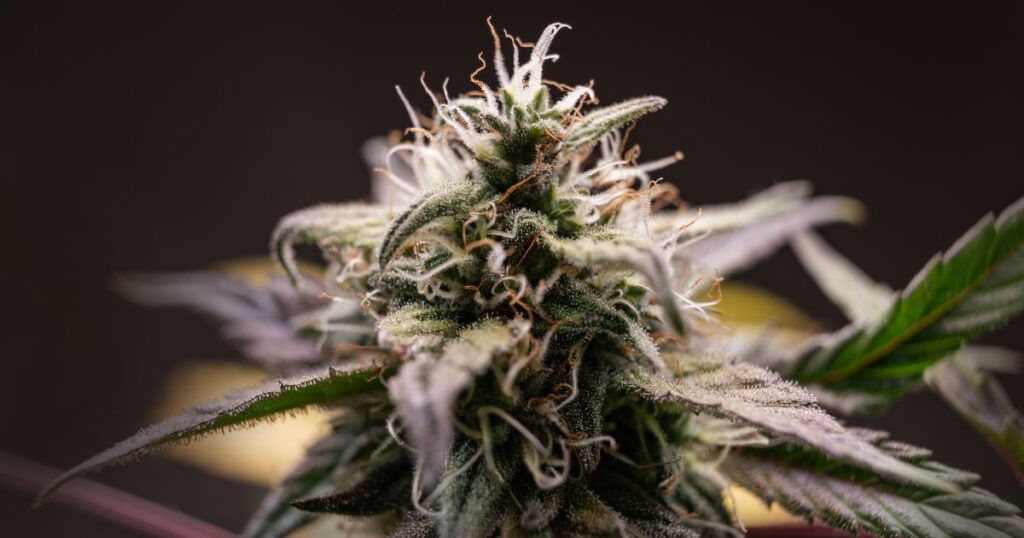The world of cannabis genetics has witnessed a revolution like never before. What was once an underground industry is now a global market teeming with potential and challenges. But with legalization and commercialization, the ecological and genetic diversity of this ancient plant is at risk.
Caleb Y. Chen’s graduate thesis from California State Polytechnic University (Cal Poly) Humboldt sheds light on the issue of cannabis genetic bottlenecking in the post-prohibition era.
By combining observations about genetic trends with breeder interviews, his research reveals how market forces and governmental policies are reshaping cannabis genetics, often to its detriment.
Let’s explore some of Caleb’s findings and build on them by emphasizing what we here at Beard Bros believe is a crucial point: the more we commercialize cannabis, the more it becomes homogenized, losing its essence as a dynamic, complex plant.
Bottlenecking in Cannabis Genetics
Cannabis genetic bottlenecking refers to the reduction in genetic diversity within the species, driven by selective breeding and homogenization for specific market demands.
Historically, cannabis showcased immense genetic diversity across its global landraces. Each strain carried unique characteristics suited to its origin, whether in terms of cannabinoid profiles, terpene structures, or even flowering times.
However, the legal cannabis market incentives in the post-prohibition era have narrowed this vast genetic pool. Breeders are optimizing for traits like high THC levels, shortened flowering cycles, and aromatic terpene profiles.
While these features cater to modern market preferences, we believe they come at a significant cost, sidelining the genetic richness that made cannabis so multifaceted.
Caleb’s thesis confirms this trend. According to his research, “just a handful of cannabis cultivars are grown at all levels of the post-prohibition landscape” and most products are now derived from a limited number of cultivars.
This shift risks transforming cannabis into a generic commodity devoid of the ecological and medicinal diversity it once embodied.
Drivers of Cannabis Genetic Bottlenecking
Commercialization and Market Demands
The commercial success of cannabis has been a double-edged sword. Legalization ushered in a boom where growers and companies raced to meet consumer demand for potent, easy-to-grow varieties.
However, this largely meant breeding for high THC levels and other traits marketable to a misinformed consumer base that associates potency exclusively with effectiveness.
State regulations play an equally significant role. Compliance testing often emphasizes THC content over other cannabinoids or the broader chemical profiles that could enhance therapeutic effects. This regulatory focus has pushed breeders toward a narrow set of genetic traits, reinforcing homogenization.
Hybridization and Loss of Wild Varieties
Chen’s research also highlights another concerning trend in cannabis genetics. With landrace strains becoming increasingly rare, much of today’s cannabis germplasm consists of hybrids designed for high-yield and efficiency.
Wild cannabis varieties are no longer truly “wild.” They have either been eradicated by human activity or are feral escapes from cultivated strains. This further bottlenecks genetic diversity, eradicating unique characteristics of historical landraces.
From Whole-Plant Medicine to Single-Molecule Compounds
The troubling implications of bottlenecking extend far beyond ecological concerns. Cannabis has traditionally been celebrated for its complexity. Each cultivar’s unique combination of cannabinoids, terpenes, and secondary metabolites contributes to its medicinal effects.
This synergy, often referred to as the “entourage effect,” underscores how the plant’s whole composition works together to deliver therapeutic benefits.
However, as cannabis moves closer to the pharmaceutical model, there is a growing tendency to reduce it to single-molecule compounds. Generic edibles, isolates, and vape cartridges are mass-produced at the cost of the plant’s holistic potential.
Caleb’s thesis warns that commodifying and legalizing cannabis as “generic agricultural commodities” erases its identity as a holistic medicine.
While isolated compounds like THC or CBD certainly have their uses, they cannot replicate the nuanced effects of whole-plant medicine. Such oversimplification undermines the plant’s medicinal and cultural legacy, alienating patients who rely on rare chemotypic profiles for specific therapeutic outcomes.
Preservation of Cannabis Genetics
Not all hope is lost. Caleb’s research recognizes the invaluable role of preservationist breeders who work to maintain and propagate cannabis biodiversity. These breeders resist market homogeneity by prioritizing rare landrace genetics or cultivating strains with unique profiles not dictated by consumer demand for THC potency alone.
For instance, with the popularization of solventless hashish extraction yields or the focus on shortening flowering cycles, breeders have inadvertently prioritized agronomic traits over medicinal versatility.
Preservationist breeders, however, understand that rare traits, secondary metabolites, and genetic variability are crucial for the plant’s long-term vitality. They illustrate what Caleb describes as Barbara McClintock-like “feeling for the organism,” intuitively recognizing and safeguarding the full potential of cannabis.
Big Picture
Bottlenecking is not just a biological or breeding issue; it’s a reflection of larger societal and economic systems. Legal frameworks, consumer education, and market focus on profitability over sustainability have collectively fueled the narrowing of cannabis genetics.
Chen’s research warns, however, of a growing risk of turning cannabis into a product line indistinguishable from pharmaceuticals, where traditional knowledge and natural diversity are deprioritized.
This reductionism is alarming, as genetic diversity underpins cannabis’s broader therapeutic efficacy. Integrating rare cannabinoids and terpenes enables cultivars to address unique medical needs.
The loss of diversity doesn’t merely strip the plant of its heritage; it also diminishes its future potential in medicine.
Moving Forward to Preserve Cannabis Genetics
If cannabis is to retain its inherent complexity and medicinal promise, stakeholders from all corners of the post-prohibition landscape must commit to preserving its genetic diversity. Efforts must include:
- Encouraging regulations that recognize the importance of broader cannabinoid and terpene profiles, not just THC percentages.
- Increasing consumer awareness about the entourage effect that highlights the importance of whole-plant medicine.
- Supporting preservationist breeders in ensuring access to diverse genetics that reflect the plant’s heritage.
- Cultivating a marketplace that values diversity and education over uniformity and misinformation.
Cannabis, in its natural state, was never meant to be a single-molecule solution. The plant thrives in its diversity, embodying a multitude of traits, characteristics, and effects that offer something for everyone. This diversity highlights the importance of embracing the plant as a whole, rather than isolating individual components.
The challenge, however, lies in resisting the tide of homogenization brought about by market-driven forces, keeping cannabis what it has always been at its core—not a pharmaceutical, but a healer.

















